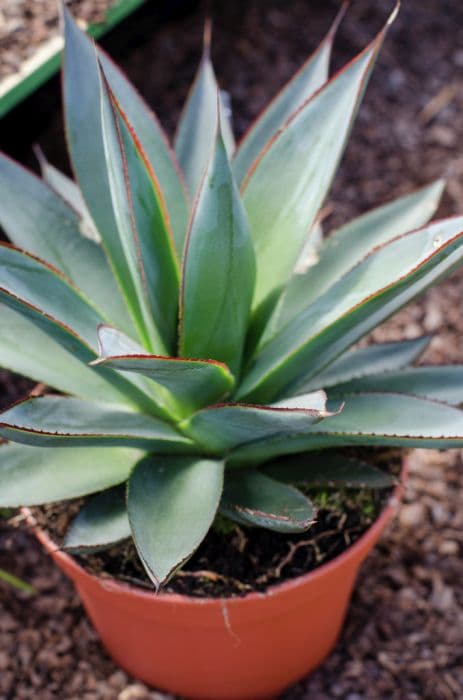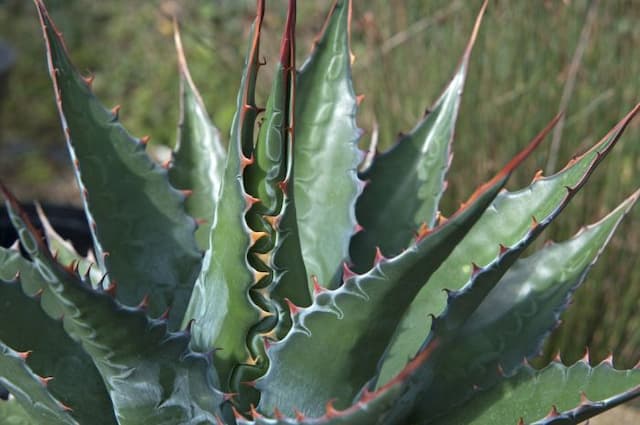Cusick's camas Camassia cusickii

ABOUT
Cusick's camas is a perennial bulbous plant that features strikingly beautiful flowers. The flowers are star-shaped and come in a range of colors from pale to deep blue, and occasionally white. Each individual flower has six petals that are symmetrically arranged, creating an elegant radial pattern. These petals emerge from a central spike known as an inflorescence, which is a cluster of multiple flowers. The leaves of Cusick's camas are long and slender, with a grass-like appearance, and they usually have a bright green color which adds contrast to the vivid blue of the flowers. The bulb of the plant is an important part of its structure, typically buried underground, which stores nutrients to support the plant's growth and survival. Despite being pleasing to the eye, the flowers not only attract humans but also various pollinators, such as bees, which are essential for the plant's reproductive cycle. Overall, Cusick's camas is a captivating plant with a visual appeal that makes it a popular choice for gardens and naturalized areas.
About this plant
 Names
NamesFamily
Asparagaceae
Synonyms
Cusick's Camas, Cusick's Quamash
Common names
Camassia cusickii.
 Toxicity
ToxicityTo humans
Cusick's camas is not considered highly toxic to humans. However, it's important to distinguish it from other species of camas, as well as the toxic deathcamas (Zigadenus spp.), which can look similar. Cusick's camas has edible bulbs that were traditionally consumed by Native Americans. If a person mistakenly eats the bulbs of the toxic deathcamas, they may experience symptoms of poisoning that can include nausea, vomiting, abdominal pain, and possibly leading to more severe reactions such as seizures, low blood pressure, and in extreme cases, death.
To pets
Cusick's camas is not known to be highly toxic to pets. However, pet owners should be cautious because the deathcamas (Zigadenus spp.), which are poisonous and can be mistaken for Cusick's camas, are toxic to pets. If a pet ingests deathcamas, they may show symptoms such as salivation, vomiting, diarrhea, weakness, and seizures. In severe cases, deathcamas can lead to life-threatening issues such as respiratory failure and death in pets.
 Characteristics
CharacteristicsLife cycle
Perennials
Foliage type
Deciduous
Color of leaves
Green
Flower color
Blue
Height
2-3 feet (60-90 cm)
Spread
1-2 feet (30-60 cm)
Plant type
Bulb
Hardiness zones
3-8
Native area
North America
Benefits
 General Benefits
General Benefits- Ornamental Value: Cusick's camas has striking blue to lavender flowers that can enhance the aesthetic appeal of gardens and landscaped areas.
- Pollinator Attraction: The blooms are a food source for bees and other pollinators, supporting local ecosystems.
- Wildlife Habitat: Provides shelter and food for various wildlife, contributing to biodiversity.
- Edible Bulbs: Historically, the bulbs were an important food source for Indigenous peoples and can still be used for culinary purposes today.
- Low Maintenance: Once established, Cusick's camas is drought-tolerant and requires little care, making it suitable for low-maintenance landscaping.
- Native Plant Gardening: As a native species, incorporating it into gardens can help preserve regional flora and ecological stability.
 Medical Properties
Medical PropertiesThis plant is not used for medical purposes.
 Air-purifying Qualities
Air-purifying QualitiesThis plant is not specifically known for air purifying qualities.
 Other Uses
Other Uses- Edible Bulb: The bulb of Cusick's camas can be roasted, boiled, or dried to make a sweet-tasting food source once used by Native American tribes.
- Flour Production: The bulbs can be ground into flour after being thoroughly dried.
- Gardening: Cusick's camas is used as an ornamental plant in gardens for its attractive blue flowers that bloom in the spring.
- Wildlife Habitat: The plant provides food for pollinators like bees and is used to create habitats for such wildlife.
- Naturalizing Meadows: Cusick's camas is ideal for meadows and prairie restoration projects due to its tolerance for different soil types.
- Photography Subject: Because of its striking flowers, Cusick's camas is often used as a subject for nature photography.
- Handcrafts: The fibrous parts of the plant could be used for weaving small items or creating plant-based crafts.
- Native American Ceremonies: Historically, the bulbs were used in trading and were considered valuable enough to be a part of ceremonies and gifts.
- Educational Use: Cusick's camas can be used in educational settings such as school gardens or nature centers to teach about native plants and ecology.
- Companion Planting: In permaculture and ecological gardening, Cusick's camas may serve as a companion plant, benefiting neighboring plants by attracting beneficial insects.
Interesting Facts
 Feng Shui
Feng ShuiThe Cusick's camas is not used in Feng Shui practice.
 Zodiac Sign Compitability
Zodiac Sign CompitabilityThe Cusick's camas is not used in astrology practice.
 Plant Symbolism
Plant Symbolism- Persistence: Cusick's camas is known for its ability to survive in tough soil conditions, symbolizing the ability to endure and persist through challenges.
- Adaptability: As a plant that thrives in various environments, Cusick's camas represents the resilience and versatility needed to adapt to changing situations.
- Harmony with nature: Traditionally used by Native Americans as a food source, Cusick's camas symbolizes a deep connection and harmony with nature and the land.
- Humility: Despite its beauty when in bloom, Cusick's camas maintains a simple and unassuming appearance, symbolizing humility and understated grace.
 Water
WaterCusick's camas should be watered regularly during its growth phase, especially during spring and early summer, to keep the soil consistently moist but not waterlogged. A good approach is to provide about 1 inch of water per week, whether through rainfall or manual watering. During the dormant period after flowering, reduce the frequency of watering as the plant requires less moisture. Sufficient water is crucial when the plant is setting buds and blooming. Overwatering can lead to bulb rot, so ensure proper drainage in the soil to prevent standing water.
 Light
LightCusick's camas thrives best in partial sun to light shade conditions. An ideal spot for the plant would be where it receives morning sunlight and is protected from the intense heat of the afternoon sun. Filtered light under a canopy of deciduous trees or a location with dappled sunlight suits this plant well.
 Temperature
TemperatureCusick's camas can tolerate a wide range of temperatures, but it does best when the temperature is between 60°F and 70°F. The plant can survive minimum winter temperatures down to around -30°F, ensuring cold hardiness in many climates. In terms of heat tolerance, Cusick's camas should be protected from extreme heat above 90°F to prevent stress and damage.
 Pruning
PruningCusick's camas requires minimal pruning; the main reason would be to remove spent flower stalks after blooming to maintain a neat appearance and prevent the plant from self-seeding excessively. The best time for pruning is in the summer after the flowers have faded. Pruning is not otherwise necessary, as foliage should be left to die back naturally to provide nutrients to the bulb for the next season.
 Cleaning
CleaningAs needed
 Soil
SoilCusick's camas flourishes best in a soil mix that is well-draining and rich in organic matter. Ideally, the soil should have a slightly acidic to neutral pH, ranging from 6.0 to 7.0. A mix of loam, peat, and sand can create an optimal environment, ensuring good drainage while retaining sufficient moisture.
 Repotting
RepottingCusick's camas, being a perennial bulb, does not require frequent repotting. It is generally recommended to repot or divide the bulbs every 3 to 4 years to avoid overcrowding and to revitalize soil nutrients.
 Humidity & Misting
Humidity & MistingCusick's camas is tolerant of a wide range of humidity conditions and can thrive in the typical humidity levels found in temperate outdoor environments. It does not have specific humidity demands but performs well with natural air moisture.
 Suitable locations
Suitable locationsIndoor
Provide bright light and cool temps; water sparingly.
Outdoor
Plant in sun-dappled area, in moist soil, cool climate.
Hardiness zone
3-8 USDA
 Life cycle
Life cycleCusick's camas, or Camassia cusickii, begins its life cycle as a bulb underground, which sprouts in early spring. The sprout will develop into a rosette of basal leaves, and as temperatures warm, it sends up a flower stalk. By late spring to early summer, this stalk blossoms into a spike of starry blue to violet flowers, which are pollinated by bees and other insects. After flowering, the plant sets seed which are then dispersed, often by wind or animal activity. As the growing season ends, the above-ground foliage of Cusick's camas dies back, and the plant enters a period of dormancy over the winter where the bulb survives underground. With the return of favorable conditions in the following spring, the cycle begins anew with the bulb sprouting once more.
 Propogation
PropogationPropogation time
Spring
Propogation: Cusick's camas, or Camassia cusickii, is typically propagated by dividing its bulbs after the foliage has died back, usually in the late summer to early fall. To propagate, you would dig up the bulbs, carefully separate any offsets from the main bulb, and then replant them immediately at a depth of about 3 to 4 inches (approximately 7.5 to 10 centimeters) and spaced around 4 to 8 inches (10 to 20 centimeters) apart. This ensures the offsets have sufficient time to establish themselves before the onset of winter. Planting at the appropriate depth helps protect them from temperature extremes and allows for proper root development. Water the new plantings gently to settle the soil around the bulbs and provide a good start for root growth.









